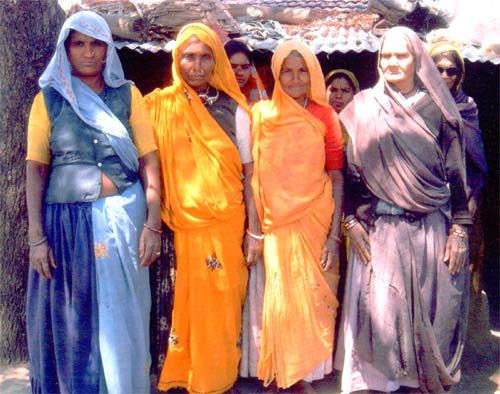Jan 07, 2026
Jan 07, 2026
by Mini Sharma
Travel to the Ataikheda village in Rajgarh district to meet happy nomads, who have found their calling in farming. These members of the Banjara community are no longer on the move. Instead, they have opted for a settled life of agriculture. But that's not all. They have taken to building roads, installing pipelines for irrigation and transforming barren lands into bountiful harvests. They are, in fact, beneficiaries of the District Poverty Initiative Project (DPIP), a World Bank anti-poverty initiative that puts resources into the hands of the poorest of the poor. In Madhya Pradesh, the DPIP covers 53 blocks in 14 districts and involves over 41,000 farmer groups - which is about 244,000 beneficiaries. Most of the beneficiaries of the project are poor farmers and those belonging to indigenous tribes and scheduled castes. As per the DPIP, the villagers are trained and then encouraged to form Community Interest Groups (CIGs) through which they can choose what is best for them, plan, take decisions and finance and implement programmes to meet social and development needs that they have identified. The villagers have to contribute five per cent of the cost or contribute in terms of labor, while the rest is borne by the DPIP. As a result, the villagers become responsible for the implementation of the project.
Ataikheda village has 15 CIGs that see villagers, now trained in trades such as agriculture, goat farming and dairy, make a living. Reaping the benefits of the project, the farmers are thankful their nomadic life is a thing of the past. "I can never forget those painful days in Rajgarh, where I worked as a construction laborer for about three years. Even though I worked for around 14 hours a day I only managed to make a meager Rs 60... survival was difficult for my family of four, says Rajaram (50). He and his family are now content. Last year, he made Rs 18,000 (US $1=Rs44) by cultivating soyabean.
It has been barely two years since the DPIP interventions began in the village. Yet, the residents have changed the face of the village and they no longer depend on the moneylenders from the nearby town of Panchore.
The villagers of drought-hit Rajgarh district - one of 22 such districts in the state - have even managed to procure water from Rajgarh's sole source, the River Nevaj. That is easier said than done: the river is three km away from Ataikheda village.
Villager Kali Bai (52) explains that with the falling groundwater table, farming had almost come to a standstill. When the CIGs were formed, the villagers purchased PVC pipes and water-lifting pumps. Soon water was being pumped into the fields from the Nevaj. As per the arrangement, members of each CIG, in possession of one hectare of land, get a share of water from the pipeline. As a result of irrigation, villagers work round the clock in the fields for a better quality crop. They have cultivated soyabean and reaped a bumper kharif crop. Each member has earned between Rs 15,000 and Rs 18,000. The villagers have even cultivated wheat over 45 hectares of barren land.
Another member, Prem Bai (60) of the Ekta group explains how each family had pooled in around Rs 100 for the purchase of road construction material. The collection, which amounted to Rs 15,000, was used to buy black metal, cement and other requirements. Then the CIG came together, yet again, to manually construct the road.
Another group has taken the initiative to dig wells and are onto their second one, having dug around 25 feet so far. Gajri Bai (60), a member of the well-digging CIG reaches the site early in the morning and remains there till evening. She is confident that the digging will yield water.
Of course, the only ones who don't stand to gain are moneylenders, of neighboring Panchore, such as Sukhlal, who used to lend money to Gajri Bai and her husband, Suraj, even for everyday requirements. Sukhlal, however, maintains that there are 45 villages in the region and he will get new clients.
For Gajri Bai and Suraj getting a loan no longer means 'Sukhlal' but 'Apna Kosh' - the self-fund run by the Village Development Committee (VDC). Surprisingly, the villagers have kept the rate of interest for a loan at par with the prevailing market rate - three per cent per month. At present, the VDC, which must have a 60 per cent-women representation, has over Rs 75,000.
The VDC has a member each from the CIGs and receives a fixed monthly amount of approximately Rs 20 from each CIG member. The amount collected is deposited in a bank. Thus, the VDC has a bank passbook and the CIG members also have passbooks, introduced by the VDC.
Kali Bai, who is the president of the VDC, feels that the villagers have become self-reliant and no longer have to set out in search of work each year.
31-Mar-2007
More by : Mini Sharma